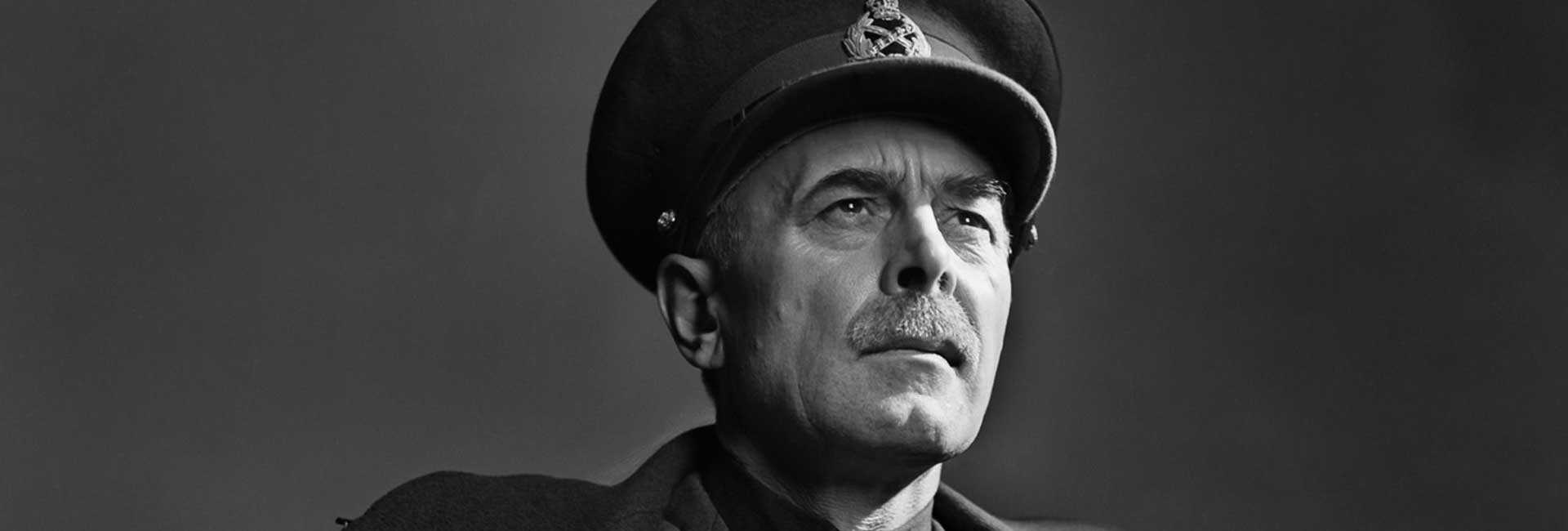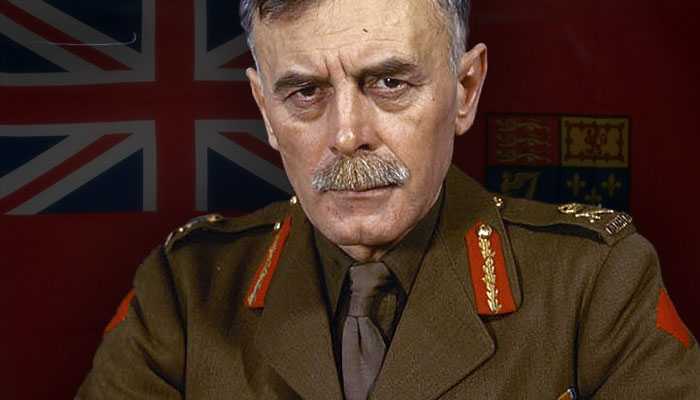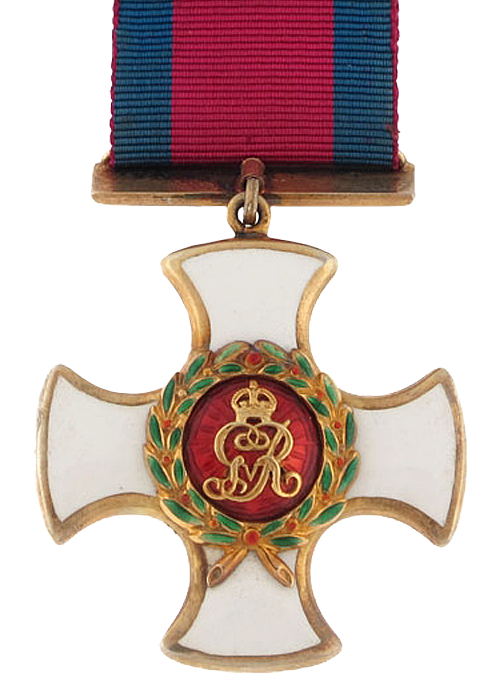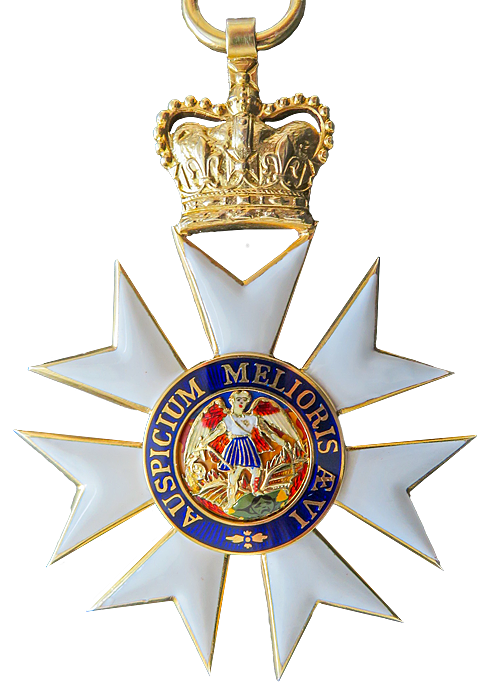
Life and death of Andrew McNaughton
Life and death of Andrew McNaughton, the facts
General Andrew George Latta McNaughton was a Canadian electrical engineer, scientist, army officer, cabinet minister, and diplomat. Born in Moosomin, District of Assiniboia, North-West Territories (now part of Saskatchewan), on 25 February 1887. Both of McNaughton's parents were immigrants from Scotland, and his youth was a happy one, being brought up by an adventuresome father who had once been a trader in buffalo hides and a kindly, loving mother. His upbringing on a farm instilled in him a life love of hard work and self-discipline. McNaughton spent his free time riding horses across the vast expanses of the Prairies while also engaging in hunting and fishing McNaughton credited his youth on a frontier farm on the Prairies with making him tough and hardy. His parents had both converted to the Church of England, voted Conservative and like many other Anglo-Canadians in the Victorian era strongly identified with the British empire.
McNaughton held to a specific Scottish-Canadian identity, which led him to a sense of Canadian nationalism based on his feeling that the British empire was dominated by the English while Canada was dominated by Scottish-Canadians like himself, but his biographer John Rickard noted " even through he would come into conflict with British generals, he always held the British people and their accomplishments in a high regard". McNaughton always attended Anglican services, and through he was devoted to science, believing that the pure rationality of science was the best solution to the world's problems, he never seems to have any difficulty in reconciling his faith in the Anglican church with his faith in science. Despite being a member of the Church of England, he was always very proud of his Scottish heritage.
McNaughton was a student at Bishop's College School in Lennoxville, Quebec after winning a scholarship. At Bishop's, McNaughton was both successful student and an athlete. In 1905, he entered McGill university in Montreal where he studied under the famous New Zealander physicist Ernest Rutherford. As an student, his grades were outstanding and he was singled out by Rutherford as a man to watch. As an undergraduate, he applied for a commission in the Indian Army with the hope of a joining a famous cavalry regiment, saying it been his boyhood dream to serve the British empire in India. He joined the Canadian non-permanent Militia in 1909 and earned a B.A. in physics and engineering from McGill University in Montreal in 1910, where he was a member of The Kappa Alpha Society, and earned an MSc with Honours in Electrical Engineering in 1912. He then stayed on at McGill as an instructor as a professor of engineering until the outbreak of the Great War.
His work in engineering innovation led to his invention of a cathode ray direction finder – a form of the technology that would evolve into radar. In 1914, he married an Irish Catholic woman from Montreal, Mabel Weir.
Second World War
As the best known Canadian soldier, McNaughton was the natural choice to lead the Canadian Expeditionary Force to Europe; the fact that McNaughton was vocally opposed to conscription, insisting that an all-volunteer force was all that was needed to win the war endeared him to the then Prime Minister, William Lyon Mackenzie King, who had promised in September 1939 that there would be no overseas conscription. In September 1939, the Union Nationale Premier of Quebec, Maurice Duplessis, had called a snap election with the aim of seeking a mandate to oppose the war, and to defeat Duplessis, Mackenzie King had promised the people of Quebec there would no overseas conscription. Having McNaughton as a professional soldier endorse Mackenzie King's no overseas conscription views as militarily sound and correct gave the prime minister a potent political shield to wield against those in English Canada who called for overseas conscription. Furthermore, McNaughton's views that the correct way to defeat Germany was through a series of methodical, "scientific" operations in which artillery was to play the dominant role promised to minimize casualties, which was the all-important consideration for Mackenzie King who wanted to avoid battles with heavy casualties as that would force him to make a difficult decision about conscription. Mackenzie King had remembered how the heavy losses taken by the Canadian Expeditionary Force in the battles from 1915 to 1917 had led to the Conscription crisis of 1917 as by 1917 the government of Sir Robert Borden had the choice of either pulling the Canadian Corps out of action or bring in conscription, and he very much wanted to avoid a repeat.
McNaughton commanded the 1st Canadian Infantry Division during the early part of the Second World War, and led the division overseas, first to the United Kingdom in December 1939 and later to France in June 1940, only to be withdrawn back to England in the final stages of the Battle of France. McNaughton, who was known for his care for his men, ensuring that the Canadian soldiers sent to Britain had the best possible accommodations, was always very popular with the rank and file of the Canadian Army. As the best known Canadian general in the world, McNaughton attracted much media attention in Canada, the United Kingdom and even the neutral United States as the great "soldier-scientist", making the cover of Life magazine on 18 December 1939, which predicated that McNaughton was the Allied general most likely to take Berlin. In April 1940, when the British government asked McNaughton's permission to send the 1st Canadian Division to Norway, McNaughton agreed, through the Norwegian campaign ended in defeat before the Canadians could arrive. As Mackenzie King was visiting the United States at the time to see President Franklin Roosevelt, the acting prime minister in Ottawa was the finance minister, Colonel Ralston, who still very much disliked McNaughton. Ralston chose to make an issue of the fact that McNaughton had agreed to send the 1st Division to Norway without consulting Ottawa first, saying this was an illegal act.[32] McNaughton felt that he acted legally as he sought an opinion from the Deputy Judge Advocate, Price Montague about the legality of sending the 1st division to Norway before agreeing first, exploded in rage about "politicians trying to run the war while 3.000 miles away".
In June 1940, McNaughton's old nemesis, Colonel Ralston, was brought back by Mackenzie King as Defence Minister after Norman Rogers, the previous defence minister was killed in an airplane clash. Relations between Ralston and McNaughton remained unfriendly as they had been in 1929 - 30. In a reversal of the expected roles, General McNaughton insisted as a professional soldier that overseas conscription was unsound while Ralston, the civilian minister of defence, was more open to the idea of overseas conscription. Ernest Côté, one of the officers on McNaughton's staff was astonished to see McNaughton call up Ralston in Ottawa to make a complaint about the appearance of Canadian Army trucks on aesthetic grounds, saying he wanted Ralston to send over more aesthetically pleasing trucks as the current trucks were too ugly for his liking. In an interview with the historian Jack Granatstein, Côté described McNaughton as a man who was universally admired and liked by the officers who served under him, but he stated that he had nagging doubts about McNaughtons' fitness for high command, saying he had an obsessive personality for whom no detail was too small. McNaughton's relations with the first two Chiefs of the Imperial General Staff, Field Marshal Edmund Ironside and Field Marshal John Dill, were excellent as he served alongside both men in World War One and counted them as amongst his friends.
He commanded VII Corps from July to December 1940 when it was renamed the Canadian Corps. Then under his leadership the Canadian Army in the United Kingdom, reinforced with the II Canadian Corps, and the Canadian Corps being redesignated as the I Canadian Corps, was organised into the Canadian First Army in April 1942. McNaughton's contribution to the development of new techniques was outstanding, especially in the field of detection and weaponry, including the discarding sabot projectile. Tensions between Ralston and McNaughton were increased in December 1941 after the fall of Hong Kong and the loss of the entire C Force when McNaughton in an "off-the-record" interview with the media blamed on Ralston, saying he "completely unfitted for the job" and that C Force should never had been sent to Hong Kong.
Mackenzie King preferred to keep the First Canadian Army in Britain to guard against a possible German invasion, which had the convenient effect of keeping the Canadians out of action and ensured no casualties, meaning no decision was necessary about overseas conscription. McNaughton very much wanted to keep all 5 divisions of the First Canadian Army together, insisting he would not allow a division or two to be detached from his command to go to North Africa as he wanted all of the Canadian units to fight together. As a result, the Canadian units languished in Britain, guarding against a possible invasion of Britain that no one felt was very likely after Operation Barbarossa was launched in June 1941, while British, Australian, New Zealand, South African and Indian divisions fought the North African campaign. While the other Commonwealth units were fighting the North African campaign, many of the Canadian officers and enlisted men in Britain were jealous of the way of the other Commonwealth units were winning glory in North Africa while they had to sit on the sidelines of the war. In the spring of 1942, when McNaughton was approached by Admiral Louis Mountbatten with a request that the 2nd Canadian Division take part in a raid on the French city of Dieppe, McNaughton jumped at the chance to finally get one of his divisions into action.
McNaughton was unduly blamed for the disastrous Dieppe Raid in August 1942, which saw the 2nd Canadian Infantry Division sustain heavy casualties, blame better deserved by the British who failed to provide needed, requested, and promised support. General Sir Alan Brooke, the British Chief of the Imperial General Staff (CIGS), his opponent since the First World War, frequently criticised him. Brooke had been the Staff Officer Royal Artillery in the Canadian Corps during the First World War and organised the "creeping barrages" in support of the assaults at the Battle of Vimy Ridge.
McNaughton's reputation was badly damaged by Operation Spartan war games held on 4 – 12 March 1943, which he described as "a dress rehearsal for the full-scale invasion of the Continent". McNaughton commanding the First Canadian Army had the task of breaking out over the river Thames to "take" Huntingdon, which was the "capital" of the fictional country of "Eastland", which was defended by 8th and 11th Corps of the British Army. Much of the criticism of McNaughton's leadership was over his decision on the night of 7 March 1943 to leave his command post to personally supervise the building of a bridge over the Thames, instead of sending out an engineer officer to build the bridge. This showed that McNaughton was unable to delegate authority properly as he insisted on doing everything himself, leading to command paralysis. McNaughton did not understand war on the operational level, and Colonel English wrote: "That McNaughton had no idea that a corps required a minimum of 24 hour warning in order to execute a major task is borne out by the following timings: at 23:35 on 6 March, he directed 2 Corps to advance east across the Thames through 1 Corps; at 16:15, the next day he gave counter orders to effect the western envelopment that night; at 21:30 on 10 March he issued orders for operations the following day; and at 22:59 11 March, he gave orders for operations on 12 March". Sir James Grigg, the British War Secretary, who attended the Spartan war game wrote he was "appalled at McNaughton's indecision" as "he stood in front of his situation map hesitating as to what to do and what orders to issue". General Alan Brooke, the chief of the Imperial General Staff, who also attended the Spartan war game wrote in his diary that the Spartan war game had done much to "proving my worse fear that ... McNaughton is quite incompetent to command an army!". The man who was to replace McNaughton as commander of First Canadian Army, General Harry Crerar later wrote that during the Spartan war game "that it became patently obvious to all" that McNaughton "was totally unsuitable for high operational command". Spartan ended in the "defeat" of the Canadians as McNaughton was unable to break out over the Thames to "take" Huntingdon".
In the spring of 1943, Mackenzie King, who until then had tried to keep the Canadians out of action as much as possible in order to avoid casualties that might lead to a difficult decision on conscription, became obsessed with the fear that the war might end with the Canadians winning no victories on land. As Churchill had described Italy as the "soft underbelly" of the Axis, King believed the up-coming Italian campaign would provide an opportunity for easy victories that would not cause too many casualties, and insisted to the British that a Canadian division had to take part in Operation Husky, the invasion of Sicily, saying the Canadian people would be unhappy with him if the war ended with only battles for Canada being Hong Kong and Dieppe. Despite King's crass political motives for wanting the Canadians to take part in Husky, the British agreed to accommodate him. McNaughton was opposed at first to losing a division, saying he was opposed to sending the 1st Division to Sicily "merely to satisfy a desire for activity". In June 1943, McNaughton very reluctantly approved of the decision to detach the 1st Canadian Division from the First Canadian Army, which was to take part in Operation Husky as part of the British 8th Army commanded by General Bernard Montgomery. McNaughton was concerned about losing a division, but was promised that 1st Division would return to Britain to rejoin First Canadian Army when Husky was completed, and the possibility of finally getting the 1st Division into action, which had been assigned to Britain in late 1939, was too much to resist. Operation Husky began on 9 July 1943, and McNaughton complained much when the initial press releases announcing the invasion did not mention the Canadians were taking part. When McNaughton tried to visit Sicily to observe the 1st Division in action, Montgomery refused, saying the 1st Canadian Division was operating as part of his 8th British Army and he not want McNaughton interfering with his operations. General Guy Simonds commanding the 1st Division supported Montgomery as he felt McNaughton would do more than "observe" his operations and it would be impossible for him to serve two commanders at once. McNaughton complained furiously about his exclusion from Sicily, saying that as the senior Canadian general in Europe that he had the right to visit Canadian troops wherever they were in Europe. The British found the Canadian nationalist McNaughton a "prickly" man to deal with, as McNaughton saw Canada as an equal power and not as a subordinate nation.
In September 1943, McNaughton clashed with Mackenzie King, when the Prime Minister decided that the 1st Canadian Division would stay with the British 8th Army as it crossed over to the Italian mainland, and that he would send the 5th Canadian Armored Division and 1st Canadian Armored Brigade and the headquarters for I Canadian Corps to Italy as well. In a memo to Defence Minister James Ralston, McNaughton wrote: "The important thing for Canada at the end of the war is to have her army together under the control of a Canadian". However, the prospect of the Canadians fighting in the "soft underbelly" of Italy, which King mistakenly believed would not involve too many losses and allowed the Canadians to win battlefield glory, was too attractive to King. McNaughton for his part, believed that all of the Canadian units in Europe should operate together as part of the First Canadian Army was incensed about losing an entire corps to the 8th Army, and did little to disguise his fury that the Canadians would operate in both Italy and in north-west Europe when Operation Overlord was launched. McNaughton wrote the "dispersion of the Army" by taking away 1st Corps from his command would be bad for morale, and in a memo to Ralston suggested "it would be wise to put someone in control who believed in it [dispersion]". A further strain in relations with Ralston occurred when the Defence Minister passed along Brooke's opinion that McNaughton was unfit for field command, a judgement that deeply wounded McNaughton's ego. McNaughton believed that Ralston was responsible for Brooke's views, leading to the exchange of increasingly acrimonious telegrams between the Ralston and McNaughton with the latter accusing the former of seeking to undermine his command.
A favourite of Winston Churchill, the British Prime Minister; though in October 1943 he came back from a weekend at Chequers looking limp and told Brooke that he had had a ghastly weekend .... kept up all hours of the morning. Brooke had warned him that Churchill might want him to agree to an operation against Norway (which had twice been turned down as impractical). While he had eventually agreed to examine the Trondheim operation, to Brooke's relief he had since sent a telegram to Mackenzie King that he was on no account to agree to the employment of the Canadian forces in any operations in Norway.
He was sent as envoy for a conference with Stalin. McNaughton, then a Major-General, was cover celebrity for Life magazine in December 1939 when Canada had entered the war, but the USA had not. His support for voluntary enlistment rather than conscription led to conflict with James Ralston, the then Minister of National Defence. McNaughton had taken the loss of I Canadian Corps to the Eighth Army very badly, leading to stained relations with Ralston while the British and Montgomery in particular made it clear that they did not want the First Canadian Army going into Operation Overlord, the invasion of France, under McNaugton's command. In December 1943, McNaughton was removed as commander of the First Canadian Army and the historian Desmond Morton wrote: "By the end of December, a fit and lively looking McNaughton returned to Canada, recalled on "on grounds of health". His successor, after a brief interlude, commanding the Canadian Corps in Italy, was Lieutenant-General Harry Crerar"
After the war
After the war McNaughton chaired the United Nations Atomic Energy Commission from 1946 to 1948; served as Canada's Ambassador to the United Nations from 1948 to 1949; and chaired the Canadian Section of the International Joint Commission from 1950 to 1962. His son, Brigadier General Edward Murray Dalziel Leslie (né McNaughton) was commander of 1st Regiment, Royal Canadian Horse Artillery and served during the Korean War. His grandson Lieutenant-General Andrew Leslie was Chief of the Land Staff of the Canadian Forces from 2006 to 2010.
Death
The general who died 11 July 1966 (aged 79) was Companion of the Bath, Companion of the Order of St. Michael and St. George and the recipient of the Distinguished Service Order. He held honorary degrees from six universities and was an honorary fellow of many engineering societies in Canada, the United States and in Britain. His son, Squadron Leader Ian McNaughton, was killed in a 1942 bombing raid.

-
Born: 25 February 1887
-
Moosomin, Assiniboia, North-West Territories, Canada
-
Died: 11 July 1966 (aged 79)
-
Montreal, Quebec, Canada
Chief of the General Staff



